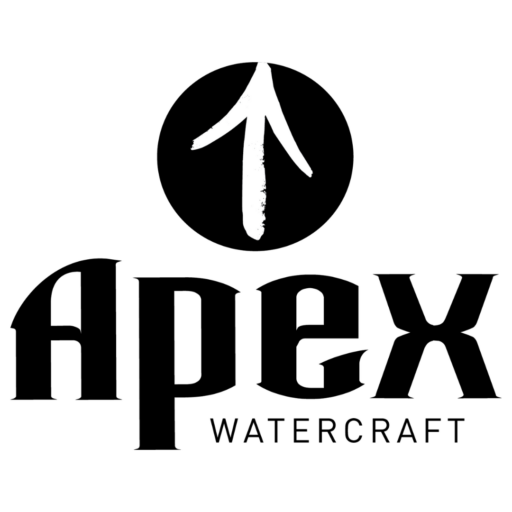First Worlds in Production Rebound coming up! Also the state of the industry in terms of understanding and accepting carbon boats (a deep dive into the hive mentality and what to expect over time)
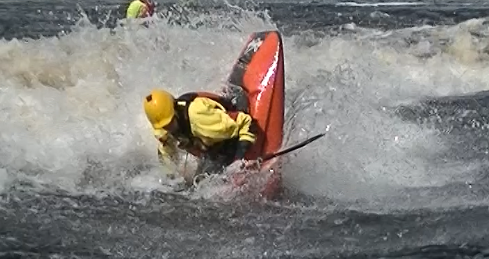
Onni from Finland, a top performing Junior men’s paddler in the Rebound has a great shot at winning the title in 2023 here in Columbus.
In 1993 I was in a Dagger Transition Prototype when I won my first World Championships for freestyle. In 1997, it was my first worlds in a Wavesport boat and I got second place in the Stubby. In 2005 I competed in my first worlds in a Jackson Kayak, and was only 1 of 5 people in a Jackson Kayak (Emily, Dane, Tobias, Devon Barker, and I). Imagine a World Freestyle Championships with 4 JK boats…. We stacked the field after 2005. In 2022 I was the only competitor (in my prototype) in an Apex, but now I have the medium Rebound and so far it looks like we’ll have, Onni from Finland, Gael from France, and myself. If I had the small Rebound out earlier there are quite a few more that would be in it. While I would switch right before the worlds to a better boat, many people are afraid to switch close to an event in case they can’t get used to it. I understand that as it is a commonly accepted concept that it isn’t ideal, while, I believe a new boat provides more focus and spurs skill growth throughout training right up to the event.
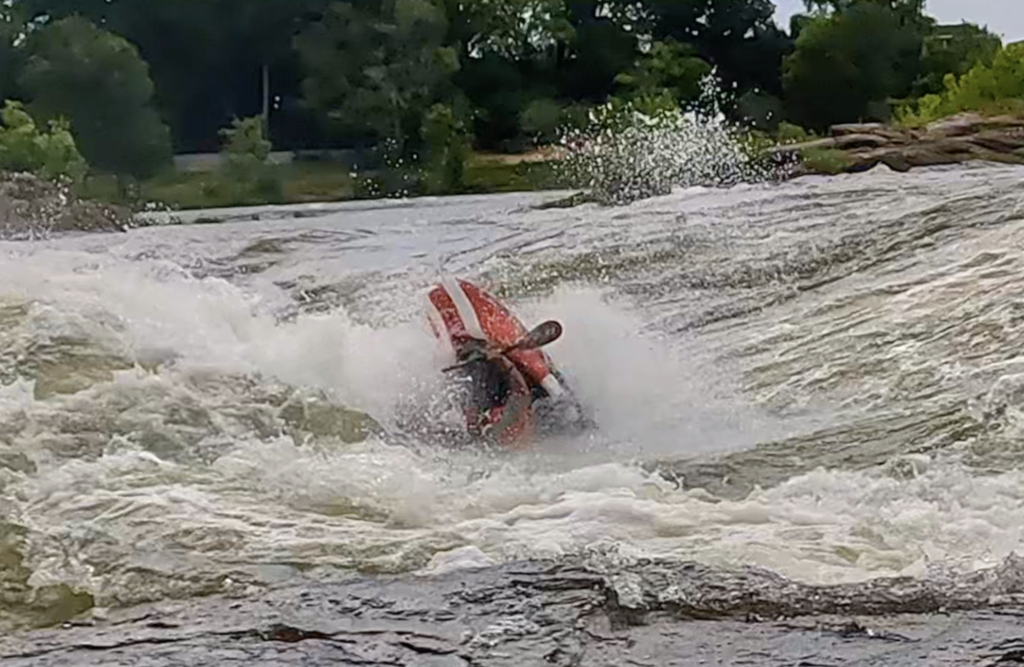
So far the Rebound has been an incredible boat for my training. I haven’t worried about getting into the boat on the rocks for every ride on Goodwave, while my competitors in carbon boats get in the bouncy eddy to avoid sliding on the rocks. My boat is lighter than the other carbon boats out there, which provides the same weight benefit as their boat provides over a plastic boat. It looks like Apex is causing others to reconsider what the weight can be and try to compete, which is a cool thing, as competition creates progress. My boat being shorter and faster than any other boat on the water provides benefits for getting a pass even when the “rib” comes through and flattens out the wave, and for every move, it rotates quicker using the same technique and energy. Freestyle paddlers are a lot like every demographic, in that the majority will follow the majority and no real thought goes into decisions such as what paddle, boat, helmet, etc. they will use. The idea that “not making a wrong decision” is stronger than “could this new things that nobody else has yet be the right one?” Is automatic, not something that people think about long and hard, and if they do, they ask a friend, “what do you think about….” And the answer is “well, if it was so good, everyone would be using it.” End of thought process. I had to deal with this with JK back in the early years and it was only the 2007 Worlds on Buseater that the gold medalists in Men’s, Women’s, C1, and Junior Women were all in the All-Star did the tide go in our favor. The good news in carbon boats is that Apex has sold more carbon whitewater boats in the USA in the last 6 months than any other brand has sold before. The numbers are still quite small, but it is a start.
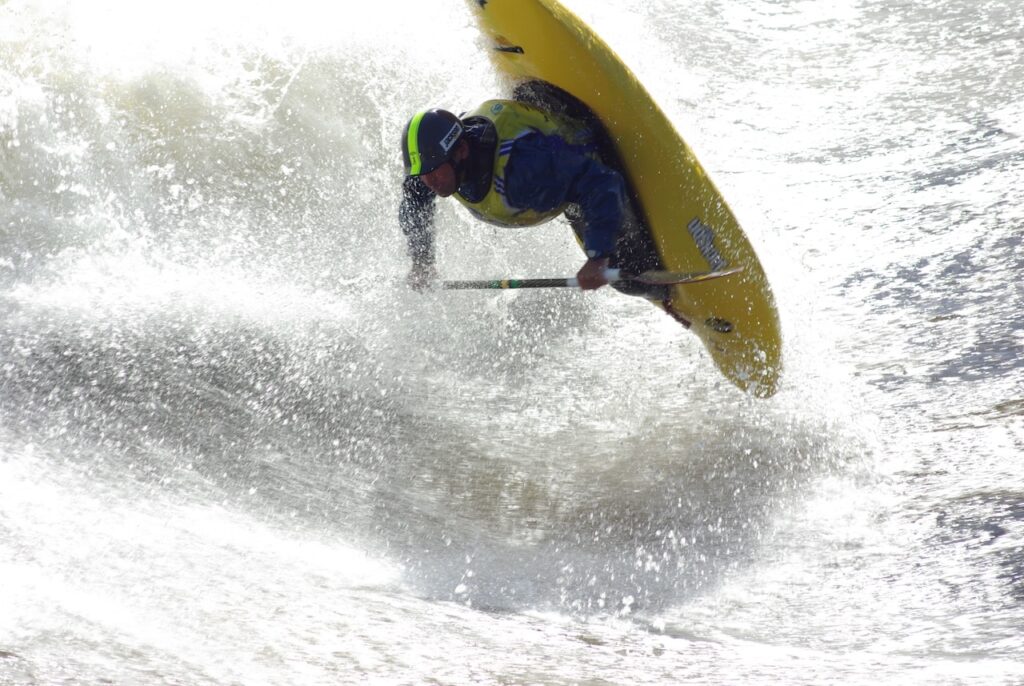
2007 Worlds on Buseater pushed the All-Star to the top-selling position in year 4 of JK.
The average age of an Apex owner today is over 60 years old. We have 3 customers between 79 and 80 years old, all long time whitewater kayakers. Most people that old no longer struggle with being a conformist. Their decision-making is more pure and spot on. “I want to kayak, but don’t want to carry that heavy plastic boat, what are my options? Oh, cool, EJ is making a 23-pound 1/2 slice that looks really good and I can see myself paddling that. It is $3k.. No problem, my bike was $10k.” I think it is wonderful that my customer base are experienced boaters that have been around for a long time. There is a another very simple reason that a 30 year boater will quickly jump on the purchase of an Apex, while a 30-something will sit on the sidelines. Experience. The first plastic boats were in 1980 for all practical purposes. However, it was mid-80’s before they become dominant, and it was early 90’s before they almost completely eliminated the fiberglass kayaks. This means that boaters who were paddling in the 80’s know what composite is like and are not afraid of it. The reality is that the boats back then were not very strong, for the most part. Polyester resin, mostly, fiberglass and some had Kevlar. An Apex today is way lighter and stronger than the old composite boats from the past. Still, my older customers all have stories of their composite boats they used to paddle and the excitement to get a new one. I, too, paddled composite every day. My first one, A Lettman Mark IV made by Old Town (100% fiberglass). My second one a Phoenix Savage. Then an Excalibur 2, a Lazer Bat, and the list goes on with my slalom boats. On the Potomac River in DC, my entire paddling group that we surfed O-Deck and Rocky Island with, and ran Great Falls with every day were 100% committed to composite. Paul Shelp, Kirk Simon (my cousin), Jim and Gil Rocha, and more refused to paddle plastic. They liked the weight, rigidity, and look of composite. There were other pockets around the USA with similar groups that weren’t swayed by the mass-market brands that were dominant at the time. Perception, Dagger, Wavesport, Pyranha, etc..
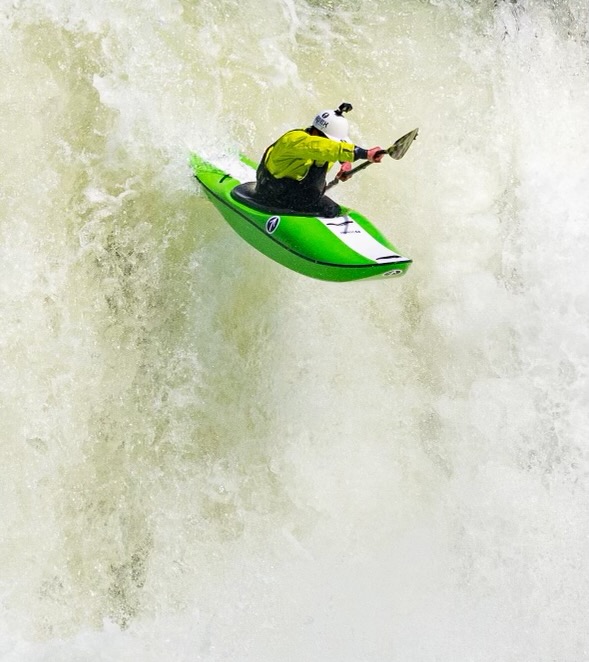
You don’t see many photos of carbon boats running waterfalls, but you will soon enough.
Plastic kayaks have their place and there is no substitute for plastic for many applications in whitewater. I would not want plastic kayaks to go away, they are the best choice for bouncing down rocky runs. However with so many brands making them, my biggest positive impact on the sport will be to bring lightweight kayaks to the general kayaking public.
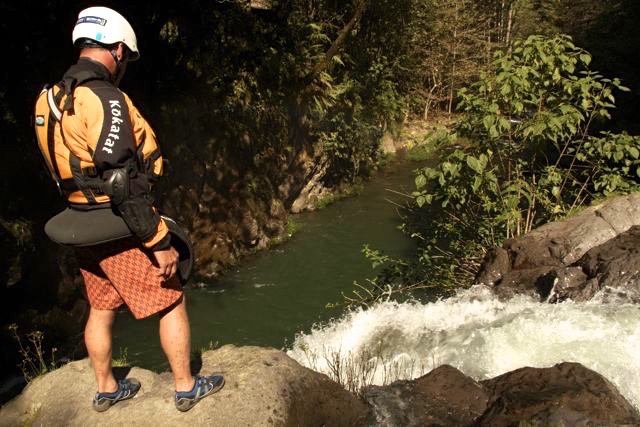
This looks like a decent waterfall for a plastic boat.
The Apex Tyr kayak is 1/2- to 1/3 of the weight of the equivalent plastic fishing kayak as well, making them so much easier to load, unload, and paddle.
What is the big deal about Apex existing compared to not? We are bringing carbon boats to the average paddler. Instead of a handful of the top freestyle kayakers in the world having one, we are making a river runner in the Ringer and a freestyle boat in the Rebound and we stock them, and have dealers who sell them. Whitewater Express in Columbus, GA, Valley Mill in Maryland, Delaware Paddlesports in DE, Caney Fork in TN, Alpine Quest in CO all sell the boats.
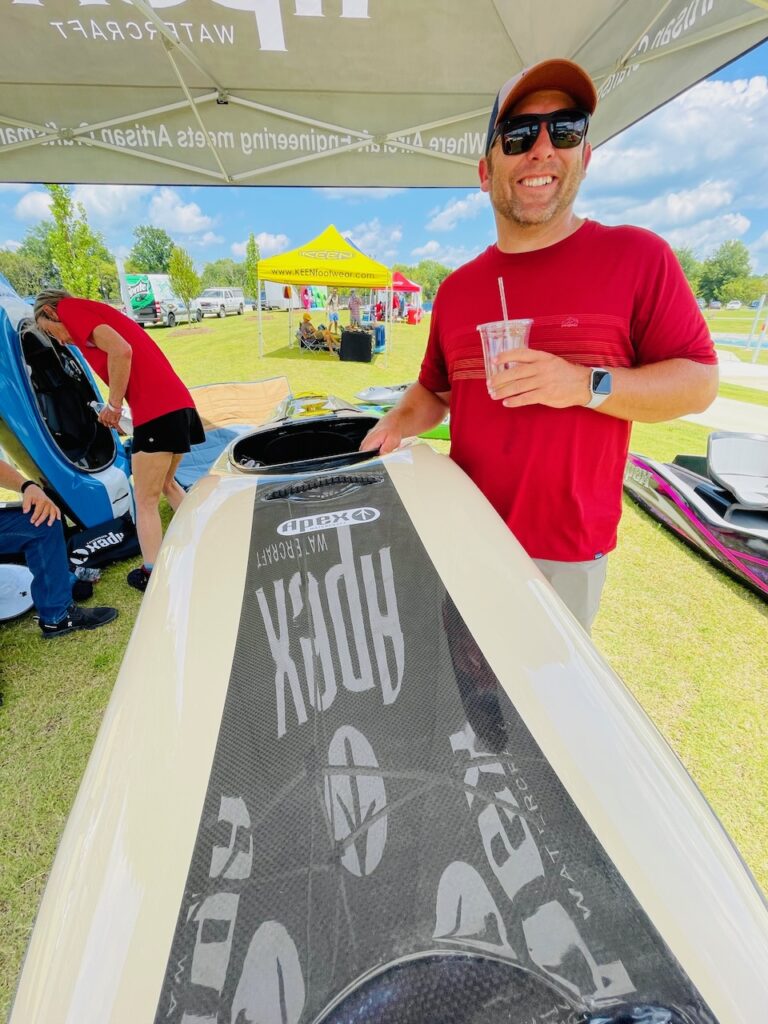
Joe Ball is the Man! He is taking great care of Apex customers!
Over time as more people get into a carbon boat, and more people read my blogs about how to treat a carbon boat, maintain it, repair it, and what to expect, the more comfortable those who are not early adopters will be. Early adopters, and then those who are not are part of the plastic boat sales challenge as well. 10% of paddlers will buy the newest boat from their favorite brand, sight unseen, because they believe in the brand and that any new design will be better than their current design. A good example of this would be with the newest iPhone or GoPro. If you have a GoPro Hero 11 black, and the Hero 12 comes out, buying it without trying your friends Hero 12 to see for yourself, and getting your friends review of it would be being an early adopter. This is 10% of the kayak market. 50% of the whitewater kayak market are not early adopters. They want to see it first, see their friend in one and make sure they really like it, etc. before getting one for themselves. When Apex is so small that most people don’t have a friend with one, and have never seen one themselves, and there are not demos around to try, 50% of the market is sitting on the sidelines twiddling their thumbs and will never know what they are missing unless they get a sudden sense of adventure and just go for it. The other 40% of the whitewater kayak market are what I call beginners, who don’t know anything about kayaking yet and are just buying their first boat and will buy the boat they took a kayak class in, or their instructor recommends, or in some cases, they just buy whatever they find to buy. Apex has sold one boat that I know of to a beginner so far. This was after she tried kayaking once, but couldn’t carry the heavy plastic boat and new she needed a lighter boat. The Ringer was her choice. Very cool. Yes, a beginner can enjoy a $3000 carbon boat as much as an experienced paddler and yes, buying a carbon boat as your first boat is not only OK, but it will increase your learning curve and you will get better faster.
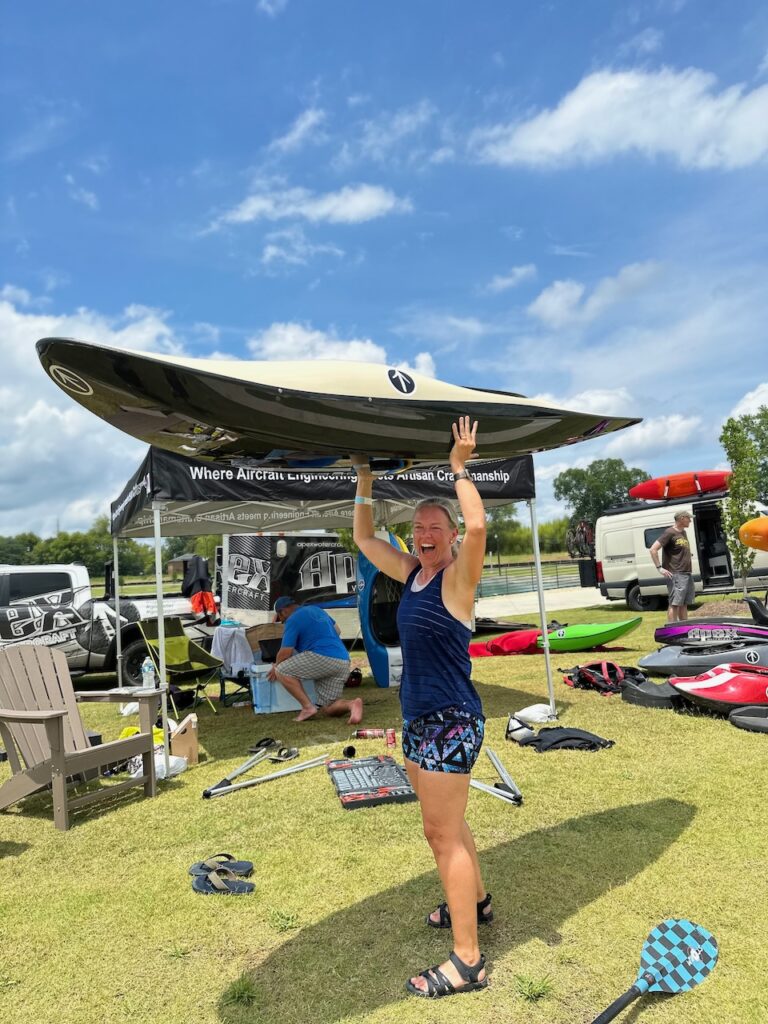
From a business standpoint, Apex still has a long uphill battle to reach critical mass before we can truly have our sales at a place that makes for a “good business”. However, I we are making some good inroads and the process is working and it isn’t “if, but When”. If we were to start selling plastic boats, I could sell a bunch of them fast, and it is tempting, because I can make them lighter than what is available today, but I am not ready to jump in that game yet. I don’t want to be distracted from my carbon mission.
Meanwhile- I hope to see you here in Columbus, GA for the World Freestyle Kayak Championships in October! This will be a fun scene in a really fun town.
🙂
EJ
